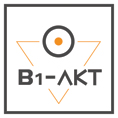
20 Avr Symbiose Research Group at Ensad Lab
Laura Petrache is speaking about #Transition #Social #Sustainable #Design, #ArchetypalBranding #SustainableLeadership at École nationale supérieure des Arts Décoratifs
Insight:
Disruption is intensely misunderstood. Conceptually, the term means to create an interruption into something that is maintaining a status quo. Colloquially, though, it is much more about making loads of money from the newest, most ‘disruptive’ (read: newer) technology out there. It’s toppling old industries through new smart, young, and agile upstarts. In this context, it’s not about making change; it’s about winning customers, clicks, and clients.
To disrupt is to disturb or intervene. The term came to prominence in the late 90s when Clay Christiansen, an MIT professor.
But where does Disruptive Design come into play? And can it really be differentiated from Disruptive Innovation? While the concepts have similarities on face value (such as shared a word that describes change), Disruptive Design is very different from the concept of Disruptive Innovation. Here are some hints
Design is the act of creating something new — sometimes iterative, sometimes innovative, and in rare cases, revolutionary. Designing is an intentional act of creating a product, service, or system that embodies some degree of change. First and foremost, design has to achieve function (purely aesthetic creative productions are not, in my opinion, design; they are more so in the world of art, which is incredible and valuable and all of the adjectives to describe the power of art and the need for more of it in the world).
But art can exist without function whereas design can’t, so when we talk about Disruptive Design, we are talking about creating intentionally disruptive creative interventions that are functionally imbued with the objective of challenging the status quo and making positive change.
So, design is about creating something that adds to or iterates on the existing, and disruption is about creating a disturbance with the intent of changing a system.
When combined, the practice of Disruptive Design is to create intentional interventions into a pre-existing system with the specific objective to leverage a different outcome, and more importantly, an outcome that is likely to create positive social change.
The Disruptive Design approach is about activating sustainability principles through creative practice. It employs a series of thinking and doing tools that anyone can implement in a formulated processes of mining, landscaping, and building; these terms are symbolistic for the processes that we can use to develop a three-dimensional perspective to exploring, understanding, and intervening in complex hyper-local to global problems.


